Pivot has garnered itself a large fan base as a boutique mountain bike brand. Up until now, however, the American brand has hardly registered as a blip on the eMTB radar. We reviewed their debut Pivot Shuttle to find out if the bike is worth its staggering € 9,999 price tag.
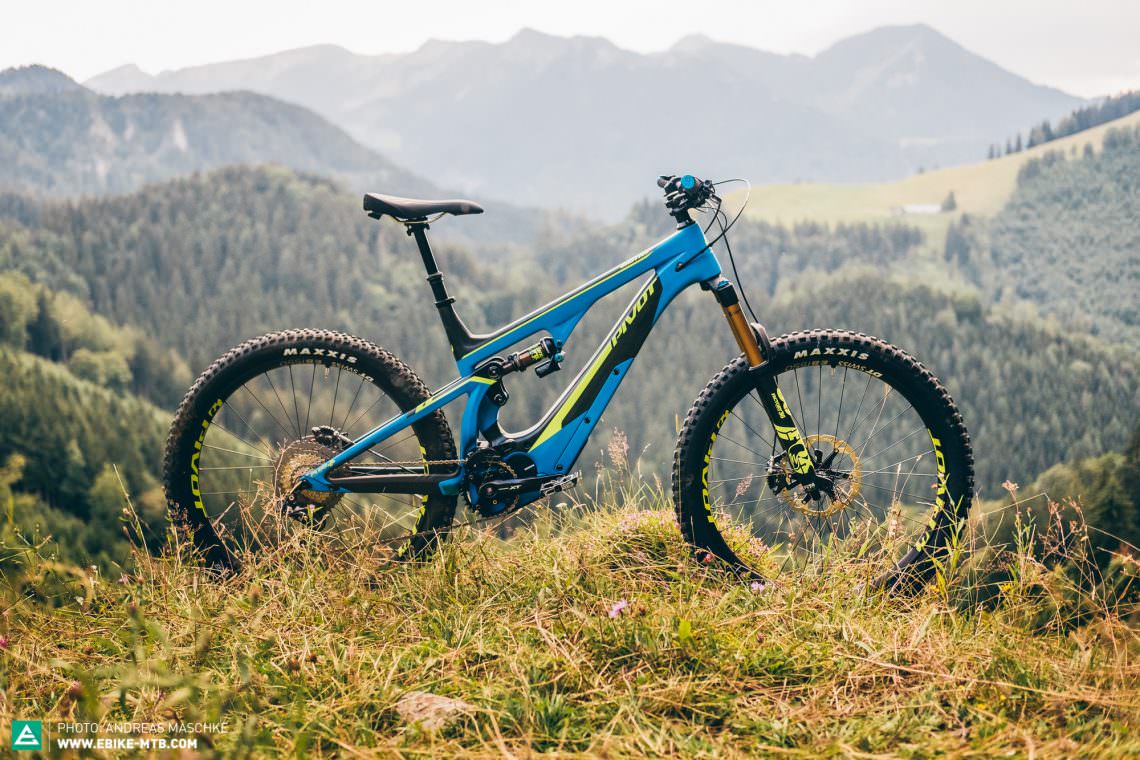
Rationally, there’s no way to justify buying the Pivot Shuttle. For half the price you could get an excellent eMTB from one of the competitors, leaving nothing to be desired. So why the Pivot? First of all, there is the beautiful carbon frame, whose low-slung top tube isn’t only visually appealing, but also offers the rider lots of freedom of movement. Then there is the exclusivity that you buy with such a bike. Also, the bike features the DW-Link rear linkage: a system with two opposing rocker links, it’s designed to make the rear end particularly efficient by utilising the pull of the chain for climbing efficiency while still maintaining sensitivity on the descents. The bike provides a lot of traction on climbs without needing to reach for the climb lever, according to Pivot.

Pivot Shuttle in detail
Fork: FOX Float 36 Factory 150 mm
Rear shock: FOX Float Factory DPX2 140 mm
Drivetrain: Shimano XT Di2
Brakes: Shimano XT
Handlebar: Phoenix Team Carbon 760 mm
Stem: Phoenix Team Enduro
Seatpost: FOX Transfer Performance Elite
Wheels: DT Swiss EB1550 (PIVOT Custom)
Tires: MAXXIS Rekon+ 27,5″
You’ve got 500 Wh external battery completely integrated into the carbon frame of the Pivot Shuttle in order to power the Shimano STEPS E8000 motor. To remove the battery, you have to loosen six Allen screws. Although it seems like no problem when you’re carrying the necessary tools, it’s really annoying. Anyone who tends to go on long rides with an exchangeable battery or has to remove the battery for charging should keep this in mind. The motor is rounded off with an electronic Shimano XT Di2 drivetrain, and the two work together perfectly, allowing quick and precise gear shifts. To slow the Shuttle down, you’ve got the powerful, new Shimano XT four-piston brakes. However, we weren’t entirely convinced of the MAXXIS Rekon tyre on the rear: although it’s got a reinforced sidewall against punctures, its low profile tread doesn’t provide enough traction – either uphill or downhill.
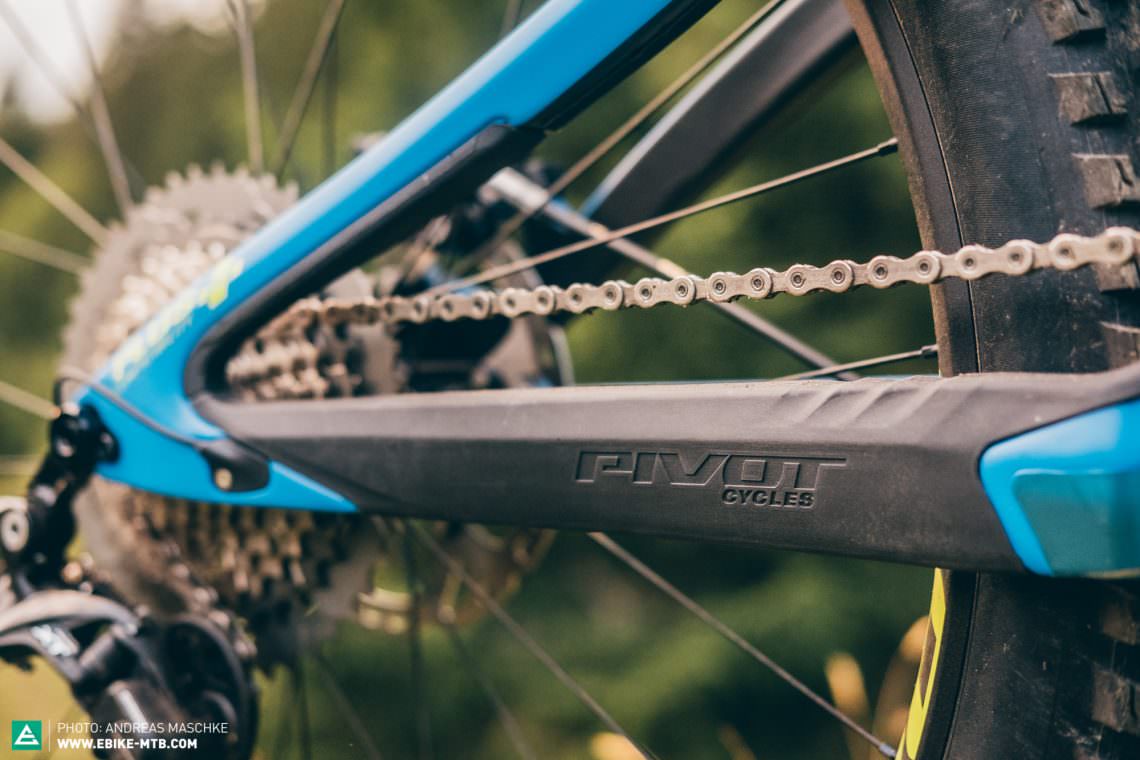
Protectors on the chain- and seatstays prevent the chain from damaging them. They also make the bike nice and quiet.
Unlike American cars, the Pivot convinces with a high-quality finish

The new XT four-piston brake convinces with a lot of power and good modulation
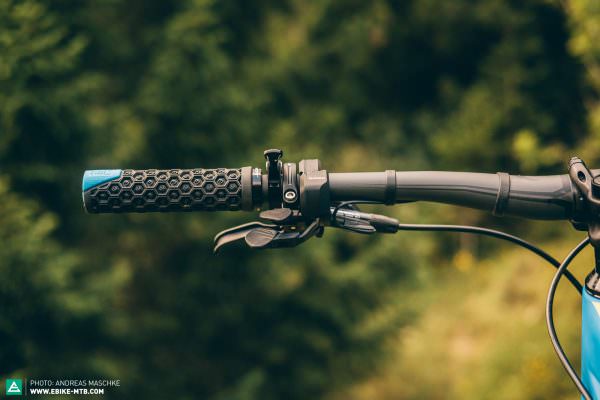
The extra soft (blue) PadLoc grips add to the Shuttle’s comfortable ride
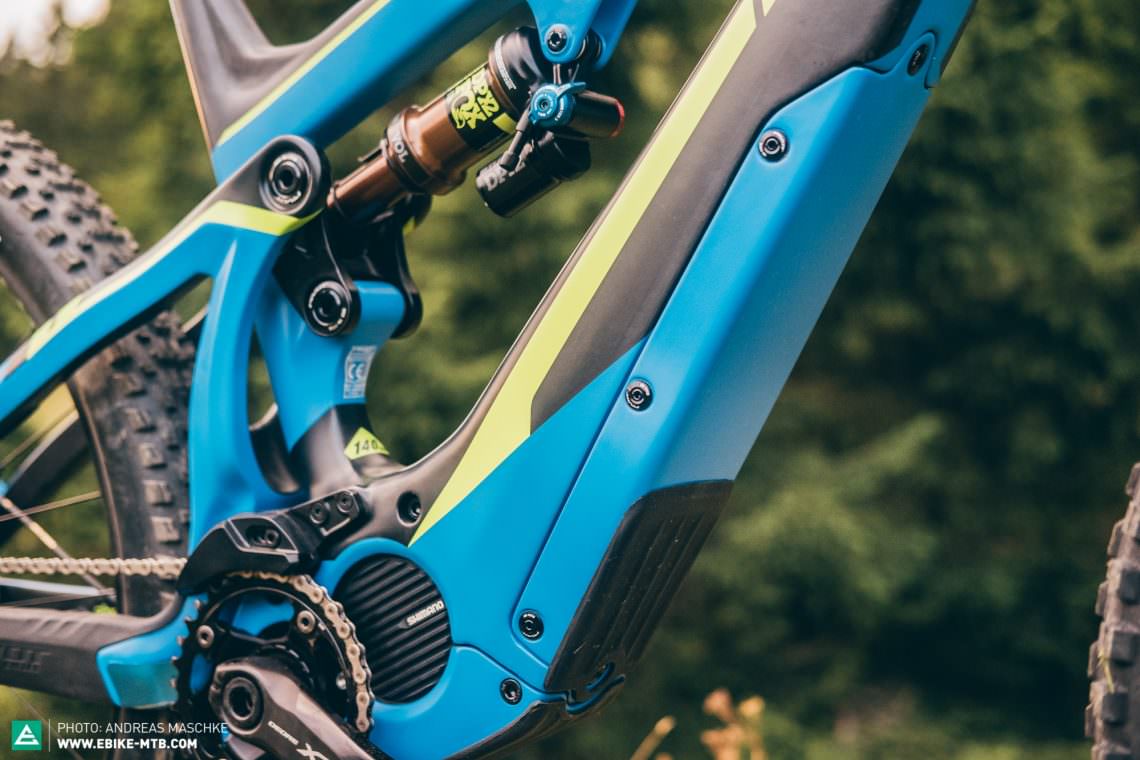
Before removing the battery, loosen six Allen screws
The Pivot Shuttle offers a supremely comfortable ride. This is not only due to the super-balanced and central seating position, but also to the sensitive suspension, which in combination with the 2.8″-wide tyres filters out every bump. Rolling down a gravel road on the Pivot, it almost feels like you’re floating a couple of centimetres above the ground – excellent! Despite its sensitivity, the rear end hardly bobs. Reaching for the climb switch would have been superfluous if it weren’t for this one little problem: with its low bottom bracket, the Shuttle’s long cranks quickly catch on roots and rocks on technical climbs. To minimise the risk of this happening, we preferred to close the shock’s compression damping, as the bike then sags less, offering more ground clearance. On wet roots, damp grass, or muddy passages we also wished for more traction from the rear tyre.
| Size | S | M | L | XL |
|---|---|---|---|---|
| Seat tube | 394 mm | 425 mm | 457 mm | 493 mm |
| Top tube | 598 mm | 620 mm | 643 mm | 671 mm |
| Head tube | 110 mm | 120 mm | 130 mm | 140 mm |
| Head angle | 65.8° | 65.8° | 65.8° | 65.8° |
| Seat angle | 74° | 74° | 74° | 74° |
| Chainstay | 437 mm | 437 mm | 437 mm | 437 mm |
| BB Height | 348 mm | 348 mm | 348 mm | 348 mm |
| Wheelbase | 1184 mm | 1208 mm | 1232 mm | 1261 mm |
| Reach | 425 mm | 445 mm | 465 mm | 490 mm |
| Stack | 603 mm | 612 mm | 621 mm | 630 mm |
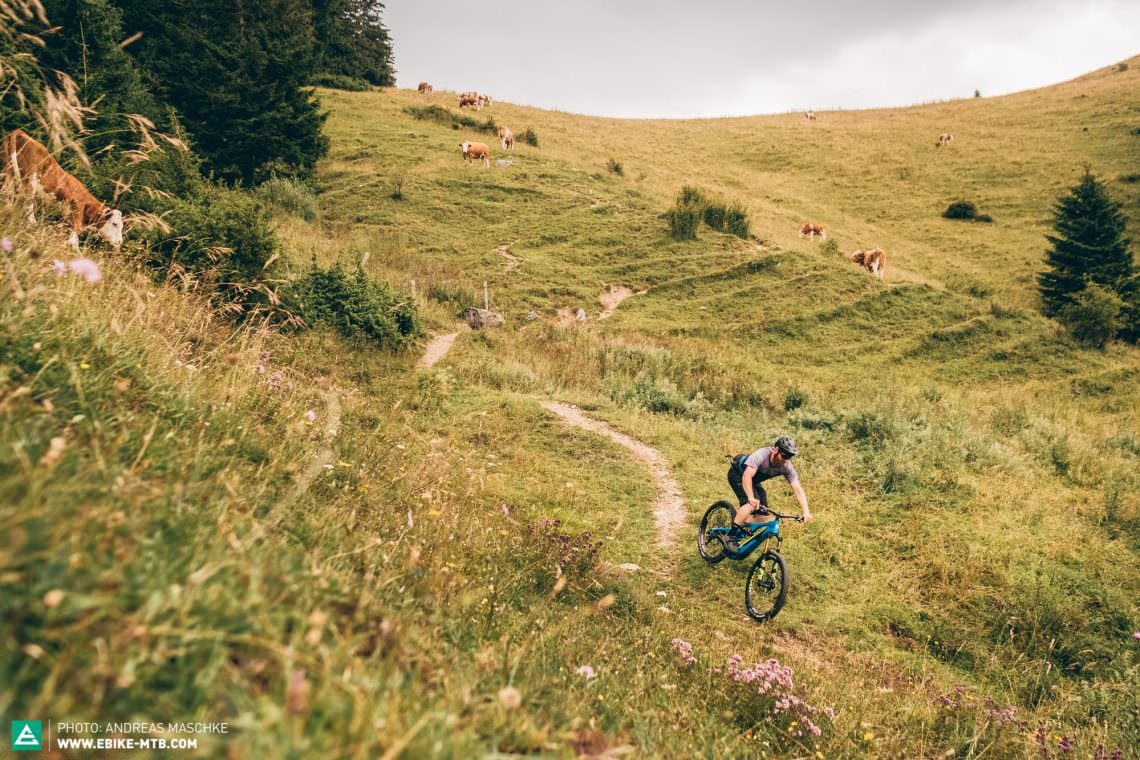
Pivot Shuttle on the trails
However, our critique regarding the climbing performance is quickly forgotten when you point the Pivot Shuttle downhill. As a rider you’re well integrated between the wheels and have a lot of room to move around, inspiring plenty of confidence. Despite having only 140 mm of travel at the rear, the shock responds sensitively while providing a lot of feedback and support, perfect for playful riders who like to hop off ledges and play with the terrain. The low weight of 20.72 kg also contributes to the Shuttle’s agility. Changing direction requires little physical effort, and the bike feels very balanced and predictable in corners.



MUUHHHH!!! Translation: Uuuh, what a beauty!
When the trail gets demanding, the Shuttle convinces with a lot of stability and good-natured handling. The low centre of gravity, potent geometry, and plush suspension mean the Shuttle irons out everything in its path. Point it over the meanest rock gardens and the bike will take it in its stride. We also enjoyed how quiet the Pivot Shuttle is, as there are no slapping chains or rattling cables.
Conclusion
The Pivot Shuttle has proven to be a successful foray into the eMTB segment for the American brand. They’ve created a bike for riders who are primarily looking to have a lot of fun on the downhills, excelling there with its simultaneously playful and composed handling. Details such as the overly complicated battery integration and small weaknesses in the spec, however, cloud the otherwise positive impression. The price is hefty, of course, though it promises exclusivity.
Strenghts
– brilliantly performing rear linkage
– balanced handling
– high-quality workmanship
Weaknesses
– rear tyre not up to the task
– battery removal very time-consuming
– pedal strikes on technical climbs

For more information head to: pivotcycles.com
Did you enjoy this article? If so, we would be stoked if you decide to support us with a monthly contribution. By becoming a supporter of E-MOUNTAINBIKE, you will help secure a sustainable future for high-quality cycling journalism. Click here to learn more.
Words: Photos: Andreas Maschke









